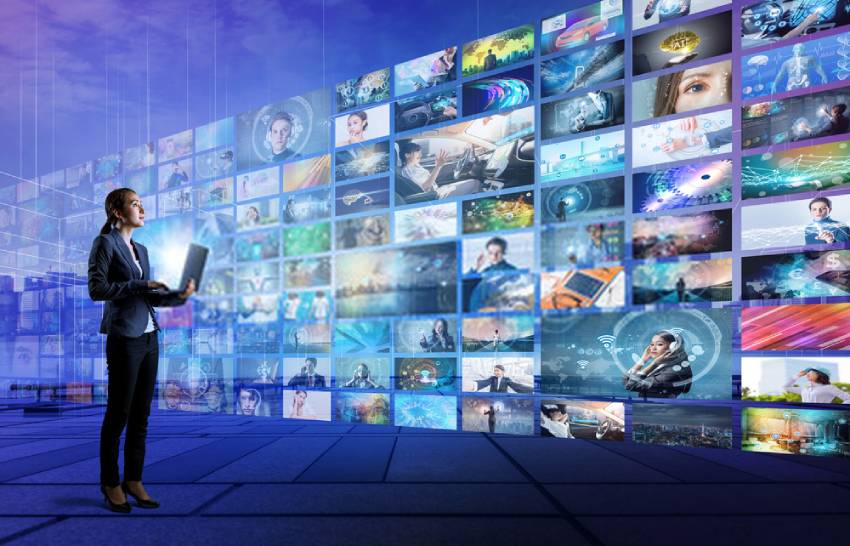Regular broadcast TV works through airwaves that can be caught by everyone – if they have an antenna with TV. But, the number of channels remains limited to 2-13. Networks such as NBC and CBS and some other independent stations are examples of broadcast TV. Whereas, Cable TV works in an entirely different way as it based on microwaves. Microwaves are being sent to users through cables, hence, not everyone can catch them without subscribing to any cable service. An intriguing fact to add here is that there is no law from the Federal Communications Commission (FCC) about cable stations because they don’t use airwaves but private cables.
Cable TV is something everyone prefers greatly due to the fact that it brings along an awesome range of channels, while regular TV offers hardly 10-20 channels. The second or maybe primary reason for most of us would be that we can bundle up our cable TV service with internet and home phone services at a discounted price. Be it spectrum silver package, Spectrum gold package or any plan they roll out, it always has much to offer to the users. We all watch 10 – 20 channels on average but who doesn’t love variety?
Initially, the pioneer cable company used to use the CATV system which stands for Community Antenna Television. They had bigger TV antennas in huge numbers that would pick the signals from different stations which are located far. Those stations would send those signals to homes through cables. After the evolution of microwave technology, they stopped using antennas. Rather they started catching those signals through dishes to send them to homes through wires. Let’s dig deeper as to why and how regular TV is different than cable TV.
You can get TV in your home through the following four ways:
- Terrestrial TV – also known as ATSC-T, DVB-T(2) or ISDB-T
- Cable TV
- Satellite TV – also known as DTH
- IPTV
You can get hybrid setups too. For example, in Italy, some homes use a combination of Terrestrial and satellite receivers.
Moreover, these systems can be operated through three different business models that are:
- Free to air: In this model, channels get monetized through advertisements, sponsors, or via government. In this model, there are no restrictions as such. Also, no need for specific equipment or smart cards to get things working.
- Free to view: It is mostly like a free to air model. But the only change is that one needs a smart card to get access to channels. This model mostly comes into the picture when the coverage has to be regulated due to any legal reason. This model is mostly associated with satellite services.
- Pay-TV: In this model, you need to get a subscription on a monthly or yearly basis. And, if the service providers offer PPV events, you need to buy them.
Now coming back to the four ways mentioned above. Let us explain a bit about them to get you a better idea about these services and these are different from one another.
Cable: Let’s talk about cable TV first. Cable has more bandwidth to give in order to make the delivery of most of the channels possible. It can also be a source of internet and telephone services.
Terrestrial: This mode of TV needs less equipment. This is commonly used for broadcasting FTA or FTV. Pay-TV is also enabled in some countries.
Satellite TV: The best part about satellite TV is its coverage – it can cover very vast areas, in fact, continents. It also allows the mixing of local channels with internet channels. Moreover, it is a great way to make the internet accessible to the ruler areas that are not covered by cable or telephone companies.
IPTV: IPTV is predominantly a pay-TV service.
For cable TV, from a central office, a 300-ohm coaxial cable is needed. However, Signals are not sure in high definition. Also, the cost can be too much because of many reasons. Well, the pros of cable TV are the availability of selecting a wide range of programming and it signals that are much reliable.
The broadcast has very high definition signals to offer at a very minimal cost. However, one needs to have an antenna to catch those signals. Furthermore, programming is also limited – many famous programming is unavailable. One more drawback is that the service can be affected by the weather. The crux is it is useful for some specific programming like content in a foreign language or religious content.
Final Thoughts:
We have tried to explain how regular TV which works through an antenna and has become obsolete in today’s spectrum is different from cable TV services. Though we have now cable TV competition on the market that is getting more attention with time and that is online streaming services such as Hulu TV, Netflix. Which one do you prefer? Have you ever used an antenna or have seen regular TV?
